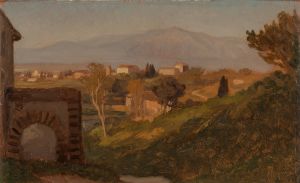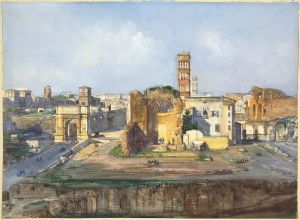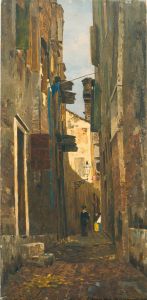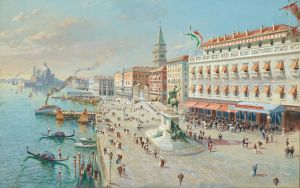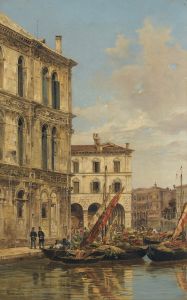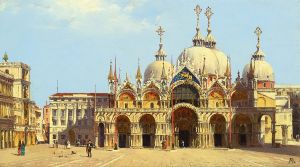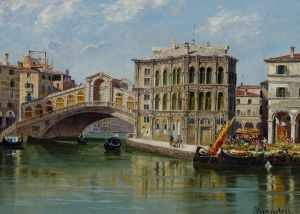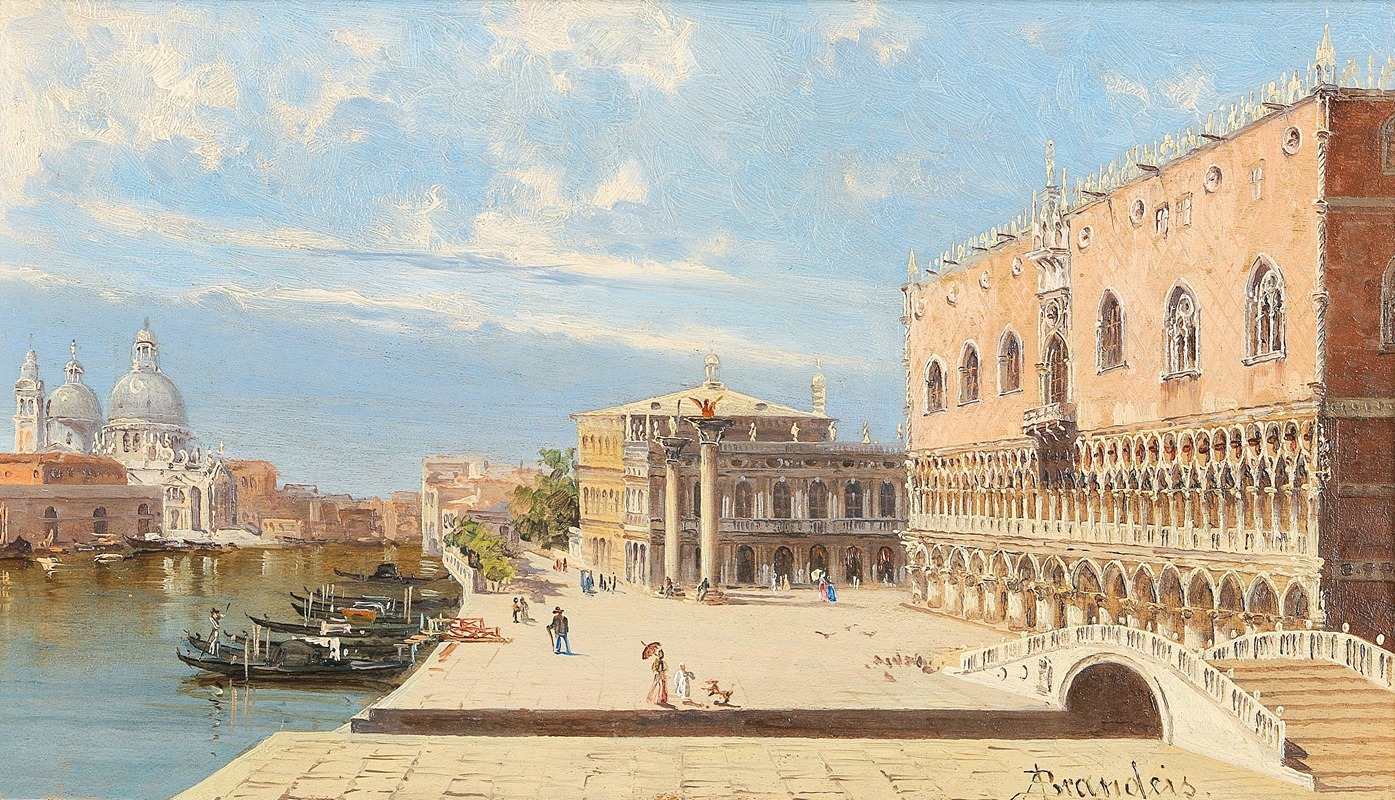
Palazzo Ducale
A hand-painted replica of Antonietta Brandeis’s masterpiece Palazzo Ducale, meticulously crafted by professional artists to capture the true essence of the original. Each piece is created with museum-quality canvas and rare mineral pigments, carefully painted by experienced artists with delicate brushstrokes and rich, layered colors to perfectly recreate the texture of the original artwork. Unlike machine-printed reproductions, this hand-painted version brings the painting to life, infused with the artist’s emotions and skill in every stroke. Whether for personal collection or home decoration, it instantly elevates the artistic atmosphere of any space.
Antonietta Brandeis was a Czech-Italian painter known for her detailed and vibrant depictions of Venetian scenes. Born in Miskovice, Bohemia, in 1849, she moved to Venice to study at the Accademia di Belle Arti. Brandeis became one of the few female artists of her time to gain recognition for her work, particularly her cityscapes and architectural paintings. Her works are characterized by their meticulous attention to detail and the ability to capture the unique atmosphere of Venice.
One of her notable works is "Palazzo Ducale," a painting that exemplifies her skill in portraying the grandeur and intricate architecture of Venice. The Palazzo Ducale, or Doge's Palace, is an iconic landmark in Venice, known for its Gothic architecture and historical significance as the residence of the Doge of Venice, the supreme authority of the former Republic of Venice.
Brandeis's painting of the Palazzo Ducale captures the essence of this historic building with remarkable precision. The painting likely depicts the palace's façade, showcasing its distinctive pink and white marble patterns and the ornate details of its arches and columns. Brandeis's use of light and shadow enhances the three-dimensionality of the structure, bringing out the depth and texture of the architectural elements.
The painting also reflects Brandeis's ability to convey the bustling life of Venice. While the focus is on the architectural beauty of the Palazzo Ducale, the inclusion of figures and gondolas in the foreground adds a dynamic element to the composition, suggesting the lively atmosphere of the Venetian canals and piazzas. This combination of architectural detail and lively human activity is a hallmark of Brandeis's work, demonstrating her keen observation and artistic skill.
Brandeis's "Palazzo Ducale" is a testament to her dedication to capturing the spirit of Venice. Her paintings are not merely representations of buildings but are imbued with the cultural and historical essence of the city. Through her art, Brandeis offers viewers a glimpse into the rich tapestry of Venetian life and architecture during the late 19th and early 20th centuries.
Today, Antonietta Brandeis's works are appreciated for their historical and artistic value. Her paintings, including "Palazzo Ducale," continue to be celebrated for their contribution to the genre of vedute, a style of painting that focuses on detailed cityscapes. Brandeis's legacy as a pioneering female artist in a predominantly male field remains significant, and her works are held in various private collections and museums, admired by art enthusiasts and historians alike.
In summary, Antonietta Brandeis's "Palazzo Ducale" is a fine example of her ability to capture the architectural beauty and vibrant life of Venice. Through her meticulous technique and artistic vision, Brandeis has left an enduring mark on the world of art, offering timeless depictions of one of the world's most enchanting cities.





